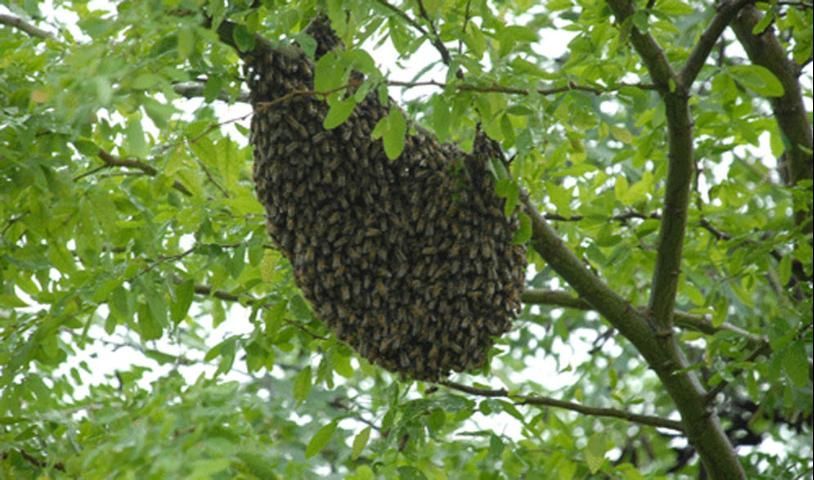
Honey bees play an essential role in maintaining the health of our ecosystem by pollinating flowers, fruits, and crops. However, their behavior, especially during swarming season, is not always well understood. As spring arrives and the temperatures are increasing, we see flowers beginning to bloom and bees becoming more active. In this article, we will address some important questions surrounding honey bee swarming, including why it happens, what it means, and how to respond if you encounter a swarm.
What is a Honey Bee Swarm?
A honey bee swarm occurs when a colony reproduces by splitting. As the colony grows, the queen bee departs with about half of the worker bees to establish a new colony, while the remaining bees stay behind with a newly emerging queen. This process is crucial for the survival and expansion of the bee population.
Before leaving, the bees prepare by constructing special queen cells in the hive, where the next generation of queens will develop. Once the new queen is nearly ready to emerge, the old queen leads the swarm—often consisting of tens of thousands of bees—in search of a suitable location to build a new home.
Why Do Honey Bees Swarm?
Swarming is a natural and necessary reproductive behavior for honey bees. Several factors can trigger this process:
- Overcrowding: When the hive becomes too full, bees instinctively split the colony to relieve congestion and ensure the survival of the group.
- Reproduction: Swarming is a key part of the honey bee’s reproductive cycle. By forming a new colony, they contribute to the growth and sustainability of the species.
- Resource Scarcity: If food sources such as nectar and pollen become insufficient within the hive’s vicinity, bees may swarm to relocate to a more resource-abundant area.
- Hive Conditions: A colony may also swarm due to temperature changes, poor ventilation, or other environmental factors that affect hive health.
What Does It Mean When Bees Swarm?

When bees swarm, they form a large, buzzing cloud as they leave the hive. Though this may appear alarming, swarming bees are typically not aggressive. Unlike bees defending their hive, swarming bees are primarily focused on finding a new home rather than stinging threats.
During this transition, the swarm may temporarily cluster in a tree branch, fence post, or other structures while scout bees search for an ideal location. These clusters can last for a few hours or up to a couple of days before the bees move on.
How to Handle a Swarm
If you encounter a honey bee swarm, follow these guidelines:
- Stay calm: Swarming bees are generally docile, but sudden movements or disturbances can provoke defensive behavior.
- Keep your distance: Avoid getting too close or attempting to touch the swarm.
- Call a professional: If the swarm settles in an inconvenient or dangerous location, contact a local beekeeper or your county extension office. Beekeepers often welcome the chance to collect swarms and relocate them safely.
How Can You Help Honey Bees?
Honey bees are essential pollinators, supporting the production of many of the fruits and vegetables we eat. Here’s how you can contribute to their well-being:
- Plant Pollinator-Friendly Gardens: Grow flowers, shrubs, and trees that provide nectar and pollen to sustain honey bees and other pollinators.
- Avoid Pesticides: Many chemical pesticides harm bees. Choose organic or bee-friendly pest control alternatives whenever possible.
- Provide Fresh Water: Bees need water to stay hydrated and regulate hive temperature. A shallow water source with stones or floating corks for landing spots can be beneficial.
- Support Local Beekeepers: Purchasing local honey and bee-related products helps maintain thriving bee populations in your area.
- Create Bee Habitats: If you have space, consider setting up a beehive. Backyard beekeeping promotes healthy bee populations and benefits local ecosystems.

Conclusion
Swarming is a natural and vital part of a honey bee’s life cycle. While witnessing a swarm may be startling, it is an essential process for colony reproduction and survival. By understanding bee behavior and fostering environments that support them, we can all contribute to the conservation of these crucial pollinators and ensure they continue their vital work in our ecosystems.
For more information on honey bees and swarms please contact your local extension office and visit these resources listed below.
University of Florida Honey Bee Lab
 1
1
